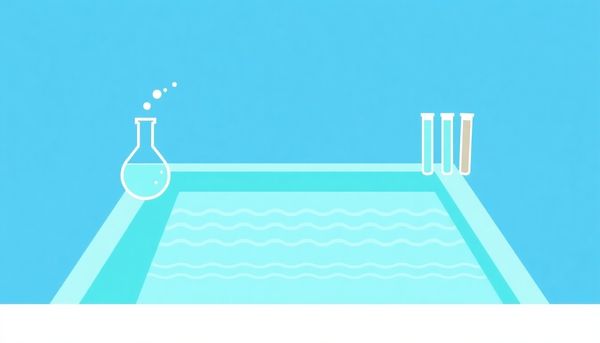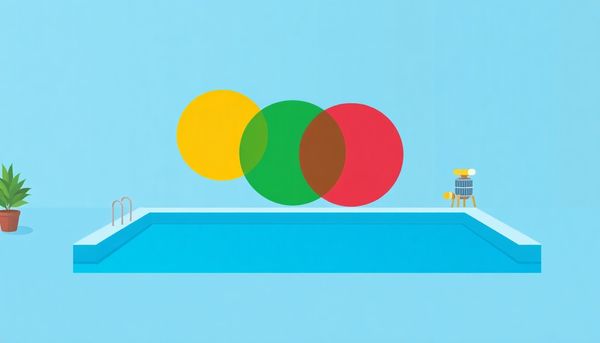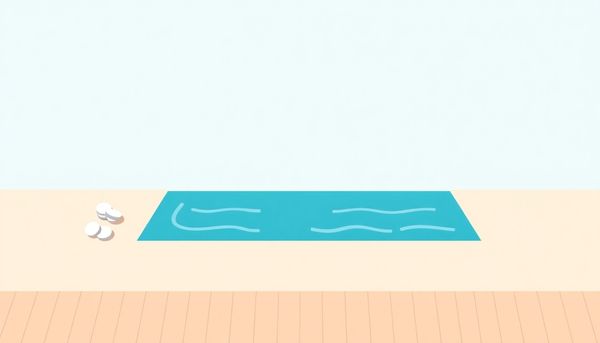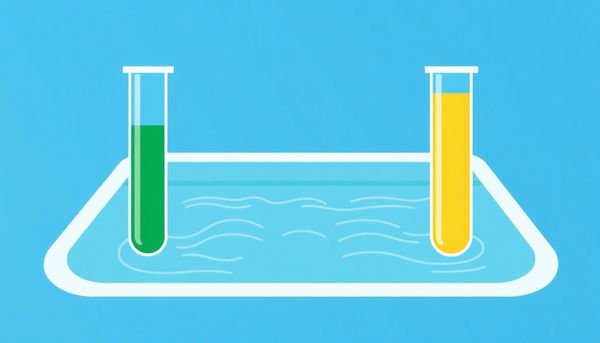Master Pool Chemistry: Essential Tips for a Crystal-Clear Oasis
June 28th, 2024
June 28th, 2024
On a sweltering summer day, few pleasures rival the crisp embrace of a well-maintained swimming pool. Yet, behind that shimmering oasis lies a delicate balance of chemicals—an unseen world of science that ensures both safety and enjoyment. Understanding basic pool chemistry is much like learning a new language; it demands attention to detail and a grasp of fundamental concepts that even beginners can master.
When I first tackled the mysteries of pool maintenance, I felt overwhelmed by terms like alkalinity, pH levels, and the role of chlorine. But soon, I discovered that these elements work together like a symphony. The pH level acts as the conductor, influencing how other chemicals perform. If it's too high or too low, skin irritation and cloudy water become unwelcome guests. Alkalinity, the unsung hero, stabilizes pH levels, preventing sudden shifts that could disrupt harmony.
Chlorine, the most famous pool chemical, serves as the vigilant lifeguard, warding off bacteria and algae. Yet, even chlorine's effectiveness hinges on perfect conditions—too much, and you'll smell it before you see it; too little, and your pool becomes a playground for unwanted organisms. Grasping these essentials ensures a pristine pool experience, transforming maintenance from a chore into a rewarding routine. As we unravel the secrets of pool chemistry, you'll find that armed with the right knowledge, creating the perfect aquatic retreat is both an art and a science.

Selecting the perfect pool sanitizer is akin to choosing the right ingredients for a favorite dish—it makes all the difference. Think back to that summer barbecue when the marinade was just right; that’s the kind of satisfaction you want from your pool water. The goal is clear, sparkling water that invites you in and keeps unwanted bacteria, viruses, and algae out.
Let’s start with the staple of pool sanitizing: chlorine. It's favored for its effectiveness and affordability, much like how salt is indispensable in cooking. Chlorine comes in two forms: stabilized and unstabilized. Stabilized chlorine, enriched with cyanuric acid, offers resilience against the sun's UV rays, making it a go-to for outdoor pools. This means fewer trips to the store and more time enjoying the water. However, too much cyanuric acid can be counterproductive, so careful monitoring is key.
For those seeking an alternative, bromine might be the answer. Although typically more expensive, bromine remains active longer in warm water—ideal for hot tubs. Unlike chlorine, it doesn’t produce the same harsh odor, making it a preferable choice for indoor pools.
Perhaps you're intrigued by non-traditional sanitizers? Biguanide, a chlorine-free option, clumps contaminants for easy filtration but requires a unique maintenance routine. Mineral systems, using silver and copper, supplement traditional sanitizers, reducing chemical dependency while keeping the water fresh.
Choosing the right sanitizer is not just a task but an art. Understanding the nuances of each option empowers you to create a welcoming, safe oasis, much like crafting that perfect dish for a gathering of friends.
Choosing the right sanitizer for your pool isn't just about flipping open a catalog and picking the first product that catches your eye. It’s a bit like choosing the perfect seasoning for your favorite dish. You want just the right balance to keep everything fresh and enjoyable. Each sanitizer comes with its own set of characteristics, advantages, and maintenance needs, so it’s worth doing a little homework.
Let’s start with chlorine, the tried-and-true classic. Known for its efficiency and affordability, chlorine works by oxidizing contaminants. It's the pool's shield against bacteria, viruses, and algae. If you're like my cousin, who once discovered a green, algae-ridden pool after a vacation, you know chlorine's importance. It’s available in stabilized forms, which resist the sun’s UV rays, making it perfect for outdoor pools. But beware: too much cyanuric acid, the stabilizer, can reduce effectiveness.
Alternatively, bromine offers a gentler touch, ideal for those sensitive to chlorine's harshness. It works well in warmer water and stays active longer, though it comes at a higher price.
For the more adventurous, biguanide provides a completely chlorine-free option. Originally a surgical disinfectant, it’s gentle on skin but might require frequent filter cleaning.
Mineral systems, using elements like silver and copper, can supplement traditional sanitizers. They reduce the need for chemicals, but aren't complete solutions on their own.
Whatever your choice, aligning it with your pool’s environment and your maintenance habits will ensure a crystal-clear, inviting swim every time.
Balancing pool water chemistry is akin to orchestrating a symphony; every element must play in harmony to keep your pool inviting and safe. pH balance, often overlooked, is a crucial first step. Think of pH as the conductor of your pool's chemistry, dictating whether the environment is too acidic or too alkaline. A well-tuned pH between 7.4 and 7.6 ensures not only comfort for swimmers but also optimal performance of sanitizers like chlorine. This careful calibration prevents skin and eye irritation, making every dip refreshing.
Alkalinity acts as the unsung hero, stabilizing pH levels and acting as a buffer against sudden changes. Keeping alkalinity within a range of 100 to 150 ppm helps sustain a consistent pH, minimizing the chances of corrosive or scaling conditions. In a pinch, common baking soda can serve as an effective alkalinity increaser—a handy trick I learned after an unexpected rainstorm upended my pool’s balance.
Calcium hardness, although less talked about, is another piece of the puzzle. The right level safeguards your pool surfaces from scaling and etching. Typically, 200 to 275 ppm suffices for most pools, particularly those lined with plaster or concrete. I discovered the importance of calcium balance one summer when I noticed unsightly scaling on my pool tiles, a lesson in the necessity of regular water testing.
By maintaining these fundamentals, you not only protect your pool but also enhance its longevity and enjoyment. Each test and adjustment minimizes the need for drastic measures like draining, ensuring your pool remains a sparkling oasis.
Navigating the world of pool maintenance might seem daunting, but ensuring your chlorine is working at its best is a task you can master with a few smart strategies. Instead of just tossing in tablets and hoping for the best, consider how balance plays a crucial role. Chlorine's effectiveness hinges on maintaining the right water chemistry. This includes managing pH levels between 7.4 and 7.6, as overly acidic or basic water can hinder chlorine's sanitizing power. Alkalinity, acting as a buffer, should rest between 100 to 150 ppm, offering stability that keeps fluctuations at bay.
One summer, my neighbor learned this the hard way. Convinced her pool was pristine, she ignored the importance of pH and alkalinity. By mid-season, algae had taken over. A few adjustments to her routine, including regular testing, turned her pool from murky green to inviting blue.
Furthermore, don't overlook the sun's impact on chlorine. Ultraviolet rays can deplete chlorine levels rapidly. Utilizing stabilized chlorine or adding a separate cyanuric acid stabilizer can help protect your sanitizer from the sun's harsh effects. Always remember, testing your pool water frequently and making necessary adjustments is key. Keeping a test kit handy can empower you to spot issues early and ensure chlorine works efficiently. By implementing these tips, you’ll not only optimize your chlorine use but also enjoy a sparkling pool all season long.

Understanding the delicate balance of water chemistry in your pool can turn a potentially daunting task into a manageable routine. While it might seem like a chore, maintaining this balance is key to ensuring your pool remains a sparkling oasis rather than an algae-laden swamp. Having personally spent countless summer afternoons poolside, I can vouch for the relief that comes from diving into crystal-clear water, knowing I got the chemistry just right.
Start by regularly testing the water for pH, alkalinity, and calcium hardness. A digital test kit can be a lifesaver, offering precise measurements at the touch of a button. With these numbers in hand, you can adjust as needed. My neighbor once ignored a slightly low alkalinity reading, and within weeks, her pool was an unsightly mess of algae. A bit of baking soda would have saved her hours of scrubbing.
When balancing your pool chemistry, the order of operations is crucial. Always adjust alkalinity first—this serves as a buffer for pH levels, preventing drastic swings. Then fine-tune the pH, ensuring it stays between 7.4 and 7.6. Lastly, check calcium hardness, especially if you’re using well water. Too high, and you risk cloudy water; too low, and corrosion could become an issue.
By following these steps, you can ensure a safe and inviting pool. With the right care, those spontaneous poolside parties can happen worry-free, and you’ll spend your time enjoying the water, not fixing it.
Maintaining a pristine pool requires more than just a splash of chlorine; it’s about crafting a delicate balance. In the world of pool care, sanitization is the cornerstone, and understanding this process can save you both time and headaches. Imagine lounging by your pool, the water shimmering like liquid glass, free from any lurking microorganisms. This scene is achievable with a thoughtful approach to pool sanitization.
Start by regularly testing your pool's pH and chlorine levels. Aim for a pH range of 7.4 to 7.6, where chlorine is most effective. It’s not just about dumping chemicals—it’s about ensuring they can do their job efficiently. Chlorine, the superhero of sanitizers, operates by oxidizing contaminants, making them harmless. Yet, without the right pH, its powers are significantly diminished.
For those who prefer a more stable option, consider bromine. It lasts longer in the sun and is gentler on the skin, a blessing for those with sensitive swimmers. However, remember that bromine also requires regular shocking to maintain its efficacy.
An often-overlooked aspect is the use of algaecides and flocculants. They act as the backup singers to your main chemical stars, keeping algae in check and ensuring particles clump together for easy filtration.
Ultimately, maintaining clean pool water is akin to nurturing a living ecosystem. It requires vigilance, a sprinkle of chemistry knowledge, and a little bit of art. Your pool doesn’t just have to be a hole filled with water; it can be a sparkling oasis with the right sanitization strategy.
Maintaining the ideal pH balance in your pool is a bit like baking a perfect cake. Just as the right mix of ingredients creates a delicious dessert, the correct pH level ensures your pool water is both safe and comfortable. The pH scale, stretching from 0 to 14, measures how acidic or basic your water is, with 7 being the neutral sweet spot. However, pool water thrives slightly above this midpoint, ideally between 7.4 and 7.6. This range not only mirrors the pH of human tears, minimizing irritation to swimmers’ eyes and skin, but also allows your sanitizer, typically chlorine, to function at its best.
Changes in your pool's pH level can be surprisingly frequent. Everything from rainwater to fallen leaves and even swimmers themselves can tilt the balance. Once, after a summer storm, I found my previously clear pool had turned into a murky mess, all because the rainwater had skewed the pH level. To prevent such disruptions, keep pH increasers and decreasers on hand. While pH increasers raise the level when it dips too low, pH decreasers help tone it down when it gets too high.
Regular testing is crucial. Imagine it as checking the oven temperature before baking, ensuring your pool stays inviting and not an uncomfortable cauldron or algae-infested swamp. With these tools and a bit of attention, maintaining that crucial balance becomes second nature.
Balancing chlorine levels in your pool is akin to orchestrating a symphony—each component must work in harmony to deliver a masterpiece. Too little chlorine invites a kaleidoscope of algae and bacteria to crash your pool party, while too much can irritate skin and eyes. Finding that sweet spot, typically at 3 parts per million (ppm), is crucial. This might sound like a chore, but with the right tools, it becomes second nature.
Remember the last time you hosted a barbecue? You probably prepped your grill, marinated your food, and kept a careful eye on the flames to ensure everything was cooked to perfection. Managing chlorine is similar. An automatic chlorinator simplifies the process, much like a grill with a built-in thermometer. It consistently releases chlorine, maintaining an even level without constant manual adjustments.
Stabilized chlorine, with its added cyanuric acid, ensures that your chlorine doesn’t disappear faster than a popsicle on a hot day. This is especially vital for outdoor pools exposed to sunlight, which can quickly diminish chlorine levels. However, be wary of over-accumulating cyanuric acid, as it can hinder chlorine's effectiveness. Think of it as adding too much salt to a dish—balanced precision is key.
For indoor pools or nighttime maintenance, unstabilized chlorine does the job without unnecessary stabilization. A good routine includes regular testing and adjustments, ensuring your pool remains inviting, clear, and swimmer-friendly all season long.

Maintaining a pool can feel like a balancing act, but with routine care, you can keep algae at bay. Think of your pool as a living space, needing regular attention to thrive. It’s not just about tossing in chemicals; it’s about understanding the subtle dance of balance within your water’s chemistry.
Take, for instance, a friend of mine who once neglected his pool for just a few weeks. The result? A vibrant green hue reminiscent of a swamp. He learned the hard way that consistent maintenance is key. Begin with regular skimming to remove debris that might compromise the water’s quality. This daily ritual, while seemingly simple, prevents organic matter from breaking down and feeding potential algae.
Testing your water weekly is another cornerstone. Keeping an eye on pH levels, alkalinity, and chlorine ensures that your sanitizer is effective. Chlorine is your best ally against algae, but only if it’s balanced correctly. If the levels are too low, algae can sneak in. Too high, and it becomes uncomfortable for swimmers.
Moreover, consider using algaecides as a preventive measure rather than a cure. They can act as a barrier, deterring algae before it even gets a foothold. It’s like applying sunscreen before stepping out into the sun—prudent and proactive. Remember, with a little diligence and the right approach, your pool can remain a sparkling oasis, free from unsightly algae.
There's an undeniable satisfaction in gazing at a pool that's a shimmering oasis of clear, inviting water. Yet, achieving such a balance isn't a mere stroke of luck. It involves a careful orchestration of various chemical elements, each playing its unique part in fending off unwanted guests like algae and bacteria. This harmony is not just about adding chemicals but understanding the symphony of pH levels, alkalinity, and calcium hardness, all essential for a healthy pool.
First, consider the pH level, the maestro conducting the pool's chemistry orchestra. pH measures how acidic or basic your water is, and when it's out of tune, the result is discomfort for swimmers and inefficiency in sanitizers. Keeping it between 7.4 and 7.6 ensures a perfect balance. Then, alkalinity acts as the buffer, absorbing changes and stabilizing pH fluctuations. Without aligning alkalinity, you risk a yo-yo effect that leaves your pool chemistry out of sync.
Moreover, calcium hardness provides the backbone, ensuring your pool's surfaces and equipment remain corrosion-free. Too little, and your pool infrastructure corrodes; too much, and cloudy water becomes the norm. Aim for a level between 175 ppm to 225 ppm to maintain equilibrium.
In navigating pool chemistry, every minute adjustment makes a significant impact, much like a chef seasoning a dish to perfection. It takes patience and precision, but the reward—a pristine and enjoyable pool—is well worth it.
Mastering the art of pool maintenance often begins with a single crucial element: optimizing chlorine effectiveness. Think of chlorine as the unsung hero battling tirelessly to keep your pool pristine. Yet, its efficiency hinges not just on its presence but on a delicate balance of factors.
First, understanding the significance of chlorine levels can make a world of difference. Typically, you want your pool's chlorine levels to hover around 3 parts per million (ppm). This sweet spot ensures that bacteria, viruses, and algae are adequately managed without overwhelming your skin or eyes. But achieving this balance requires regular testing, a ritual akin to checking your car's oil. A test strip can reveal if your chlorine levels are in harmony or need a slight nudge.
Sunlight, while beautiful, is chlorine's formidable adversary. UV rays can prematurely deplete chlorine, leaving your pool vulnerable. Utilizing stabilized chlorine—which includes cyanuric acid—acts like sunscreen for your chlorine, granting it longevity and potency. But be wary; too much cyanuric acid can counteract its benefits, reducing chlorine's sanitizing power. Diligent monitoring is essential to ensure cyanuric levels stay below 100 ppm.
Lastly, shocking your pool periodically is akin to hitting the reset button on your pool's chemistry. This process eradicates chloramines, the byproduct that gives pools their pungent odor and irritates swimmers. By shocking your pool, especially after heavy use or storms, you restore chlorine's vigor, ensuring your aquatic oasis remains inviting and safe.
Underneath the shimmering surface of a pool lies a delicate balance that can be easily disrupted by something as small as a speck of algae. These tiny green intruders thrive when given the opportunity, often turning what should be an oasis into a murky mess. A key to controlling algae growth is consistent pool maintenance, guided by a few essential principles of pool chemistry.
Start with a solid defense: sanitation. Chlorine, your trusty ally, works tirelessly to prevent algae from gaining a foothold. By maintaining a chlorine level of around 3 parts per million (ppm), you establish a hostile environment for these unwanted guests. Regular testing of water ensures you catch fluctuations early, adjusting as needed to keep algae at bay.
In addition to chlorine, consider using an algaecide as a preventative measure. These substances can stop an algae bloom before it starts, making them a valuable tool in your pool maintenance arsenal. It’s like having a backup plan that kicks in when conditions become ripe for algae.
Another critical aspect is water circulation. Stagnant water is a playground for algae, so ensure your pool pump is running efficiently, keeping the water moving and the chemistry evenly distributed.
Finally, don't overlook the power of a clean pool. Regularly skimming debris and brushing surfaces prevents organic matter from feeding potential algae blooms. With these strategies, your pool can remain a crystal-clear haven, free from the grip of green invaders.

Chlorine is a pool's best friend, yet managing it wisely can transform the task from a chore to a streamlined routine. The key lies in understanding the balance between efficacy and economy. My neighbor, for instance, used to dump chlorine haphazardly, only to battle lingering odors and irritated eyes. With a bit of guidance, he discovered the art of optimization.
Start by maintaining the chlorine level at an ideal 3 ppm. Too low, and bacteria party in your pool. Too high, and you’re hosting a chemical cocktail that no one wants to swim in. An automatic chlorinator can be a lifesaver, delivering a consistent chlorine dose with minimal fuss. My friend swears by hers, claiming it gives her more time to perfect her backstroke instead of fiddling with chemicals.
For those with outdoor pools, consider stabilizing your chlorine with cyanuric acid. This not only extends the chlorine’s life but also protects your wallet by reducing how often you need to replenish it. However, be cautious—too much stabilizer can render chlorine ineffective, leaving water unsafe.
Embrace a proactive approach: regular testing. It’s as simple as a weekly routine, much like watering your plants. This vigilance helps you tweak chlorine levels before they become a problem. Thus, optimizing chlorine isn't just about using less—it's about using it smartly, ensuring a safe, sparkling pool with minimal effort.
Maintaining a sparkling clean pool is often seen as a chore, but automatic chlorination can make this task almost effortless. As a pool owner myself, I vividly remember the days of wrestling with chlorine tablets and constantly checking levels. It wasn't until I discovered the magic of automatic chlorinators that my pool maintenance life changed dramatically.
An automatic chlorinator works by dispensing a controlled amount of chlorine into your pool, maintaining consistent sanitizer levels without constant intervention. This device not only evenly distributes chlorine, ensuring no spots are overly saturated or under-treated, but it also reduces your exposure to harsh chemicals. Imagine setting a dial and letting the chlorinator handle the rest. This ease allows more time to enjoy the pool rather than managing it.
Moreover, automatic chlorinators are adaptable to different pool sizes and types. When I started using one, the improvement was immediate. My weekend routine of adjusting and testing was reduced to simple periodic checks. With my pool's chlorine levels balanced, the water remained clear, and algae issues became a thing of the past.
Installation is typically straightforward, and while the initial cost might seem significant, the time saved and efficiency gained make it a worthy investment. For anyone eager to reclaim their leisure time, implementing an automatic chlorinator is a game-changer in the realm of pool chemistry.
Mastering the art of pool chemistry is akin to maintaining the delicate balance of a well-tuned orchestra. Each component—pH, alkalinity, calcium hardness—plays its part, and when one goes off-key, it can disrupt the entire composition. The primary goal is to ensure these elements harmonize so that your sanitizer, typically chlorine, can perform optimally.
Start by regularly testing your pool’s pH level. Ideally, it should sit between 7.4 and 7.6. This range is crucial because if the pH drifts too far in either direction, it can hamper the effectiveness of your sanitizer, not to mention cause irritation to swimmers' eyes and skin. Keep a supply of pH increaser and decreaser on hand for immediate adjustments.
Alkalinity acts as a buffer for pH, preventing drastic shifts that can destabilize your pool environment. Maintaining alkalinity between 100 ppm and 150 ppm will safeguard against rapid changes and support a stable pH level. Baking soda is a convenient household item that can be used to raise alkalinity if needed.
Calcium hardness, though often overlooked, is essential to prevent corrosion of pool surfaces and equipment. Aim for a level between 175 ppm and 225 ppm. Too low, and your pool could suffer structural damage; too high, and you might deal with scale formation and cloudy water.
Conquering pool chemistry doesn’t require a degree in science; it just demands consistent monitoring and timely intervention. With the right tools and a little dedication, your pool can remain a sparkling oasis all season long.
Carefully managing stabilized chlorine is a smart move for any pool owner. This type of chlorine is enhanced with cyanuric acid, which acts like sunscreen for your pool water, preventing the sun’s UV rays from quickly burning off the chlorine. It's especially beneficial for outdoor pools, where sunlight can rapidly diminish chlorine's effectiveness. You’ll find that using stabilized chlorine means fewer trips to the store and fewer headaches from constant adjustments.
Consider a time when I decided to test its efficacy one summer. By switching to stabilized chlorine, I noticed my pool's clarity improved, and I wasn’t adding chlorine nearly as often. It was like giving my pool a protective shield against the relentless summer sun. However, I soon discovered the catch: too much cyanuric acid can be a problem. When its levels climbed too high, the chlorine’s sanitizing abilities were compromised, leading to unexpected algae growth.
To avoid this pitfall, make it a part of your routine to test cyanuric acid levels regularly. If they soar beyond the ideal 100 ppm, you might find yourself in a bind, needing to partially drain the pool to restore balance. Ultimately, using stabilized chlorine wisely involves understanding both its benefits and its limits. A little vigilance goes a long way in maintaining crystal-clear water and a pool you can enjoy without worry.

Pool chemistry might seem like a mystifying subject, but mastering the balance of pH and alkalinity is a straightforward task once you know the basics. Your pool’s pH level, ideally sitting between 7.4 and 7.6, directly affects the effectiveness of chlorine and the comfort of swimmers. Too high or too low, and you might find yourself wrestling with skin irritation or ineffective sanitization.
Remember last summer when your pool water felt as gentle as silk? That was probably due to a well-maintained pH. On the flip side, if you ever noticed eye-sting or an unpleasant odor, your pH was likely out of whack. Keeping it balanced isn’t just about comfort; it’s also crucial for protecting equipment and surfaces from corrosion or scaling.
Alkalinity acts as a buffer for pH, preventing rapid fluctuations that can throw your pool chemistry into chaos. An ideal range is between 100 ppm and 150 ppm. Think of alkalinity as a sturdy foundation; it stabilizes your pool's environment, making pH adjustments easier and less frequent.
Having a stash of pH increasers and decreasers, along with baking soda for alkalinity, is a wise choice. I once ran out mid-season, and let me tell you, rushing to the store was not part of my summer fun plan. Adjust gradually and test regularly to maintain that perfect aquatic balance—you’ll thank yourself every time you dip your toes into that sparkling water.
Understanding the science behind balancing water attributes in a swimming pool can transform pool maintenance from a chore into a rewarding routine. The key lies in the triumvirate of pH, alkalinity, and calcium hardness. Each of these aspects works in harmony to keep your pool water safe and pleasant. When I first became a pool owner, I felt overwhelmed by the need to constantly test and adjust my water. But I learned that maintaining balance is like riding a bike—once you get the hang of it, it becomes second nature.
Start with pH, the measure of acidity versus alkalinity in your water. It should hover between 7.4 and 7.6. Too low, and the water can become corrosive; too high, and it might cloud or scale. I keep a stash of pH increaser and decreaser handy, ensuring I can adjust the levels swiftly if needed.
Next is alkalinity, which acts as a buffer for pH. Ideally, it should sit between 100 and 150 ppm. Baking soda can serve as a surprisingly effective alkalinity increaser, a tip I discovered when I ran out of commercial products.
Lastly, calcium hardness should be monitored, especially in regions with naturally hard or soft water. Aim for 175 to 225 ppm for most pools, adjusting slightly higher for concrete or plaster pools. High calcium hardness led to some cloudy water issues in my experience, but a little shock treatment and flocculant worked wonders. By keeping these water attributes in check, you ensure that your sanitizer performs optimally, and your pool remains a pristine oasis.
Taming chlorine to work at its peak is a bit like orchestrating a symphony. Each element in your pool must be in harmony. Just last summer, my neighbor's pool turned into a green mystery simply because they overlooked their chlorine levels. The water was clean one day, then transformed into an algae haven overnight. It was a vivid reminder that proper chlorine management is crucial for a pristine pool.
To maximize chlorine efficiency, start by ensuring the pH level is within the sweet spot of 7.4 to 7.6. This balance allows chlorine to perform at its best, much like a well-tuned instrument in an orchestra. An imbalanced pH level can render chlorine inactive, inviting unwanted guests like bacteria and algae to your pool party.
In addition, regularly check your chlorine levels, aiming for that golden 3 parts per million (ppm). Anything less, and you're flirting with murky waters. Anything more, and you’re risking harsh water conditions. I remember a time when I forgot to check my chlorine level after a big family barbecue. The smell of chloramines the next morning was a not-so-subtle reminder to stay vigilant.
Finally, consider the sun’s impact on chlorine. For outdoor pools, using stabilized chlorine with cyanuric acid can extend chlorine's life, letting it linger longer to do its job. However, watch the cyanuric acid levels—it’s a balancing act to avoid reducing chlorine’s effectiveness. With these strategies, your pool will be a sparkling oasis all season long.

This article provided insights into maintaining your pool. Start your pool care journey today!
Want to become a pool maintenance expert? Our free Pool School course covers everything you need to know about pool care. From basic maintenance to advanced troubleshooting, you'll learn how to:
Join over 10,000 pool owners who have already transformed their pool care routine. Get started with our free Pool School course today!